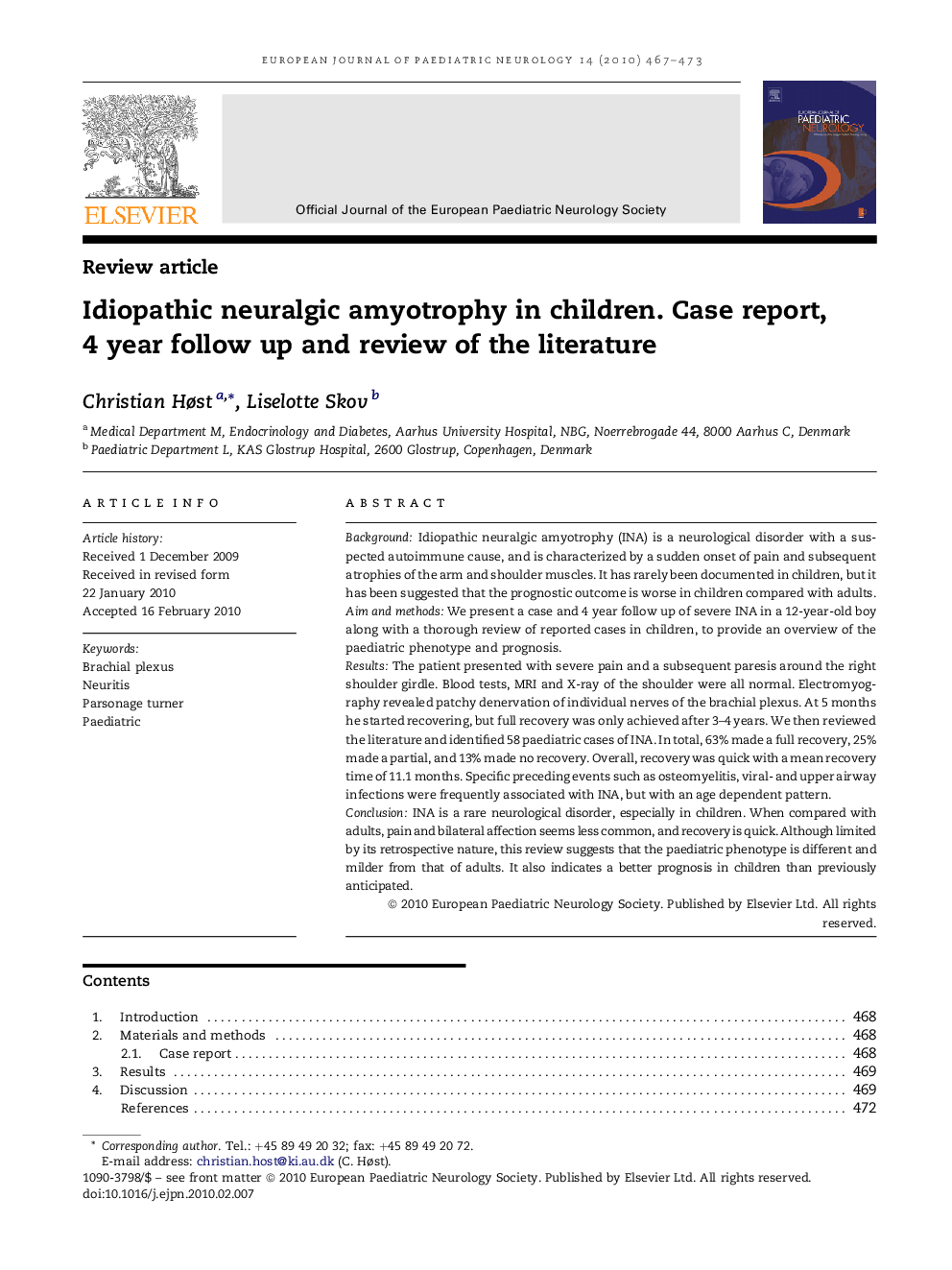| Article ID | Journal | Published Year | Pages | File Type |
|---|---|---|---|---|
| 3054192 | European Journal of Paediatric Neurology | 2010 | 7 Pages |
BackgroundIdiopathic neuralgic amyotrophy (INA) is a neurological disorder with a suspected autoimmune cause, and is characterized by a sudden onset of pain and subsequent atrophies of the arm and shoulder muscles. It has rarely been documented in children, but it has been suggested that the prognostic outcome is worse in children compared with adults.Aim and methodsWe present a case and 4 year follow up of severe INA in a 12-year-old boy along with a thorough review of reported cases in children, to provide an overview of the paediatric phenotype and prognosis.ResultsThe patient presented with severe pain and a subsequent paresis around the right shoulder girdle. Blood tests, MRI and X-ray of the shoulder were all normal. Electromyography revealed patchy denervation of individual nerves of the brachial plexus. At 5 months he started recovering, but full recovery was only achieved after 3–4 years. We then reviewed the literature and identified 58 paediatric cases of INA. In total, 63% made a full recovery, 25% made a partial, and 13% made no recovery. Overall, recovery was quick with a mean recovery time of 11.1 months. Specific preceding events such as osteomyelitis, viral- and upper airway infections were frequently associated with INA, but with an age dependent pattern.ConclusionINA is a rare neurological disorder, especially in children. When compared with adults, pain and bilateral affection seems less common, and recovery is quick. Although limited by its retrospective nature, this review suggests that the paediatric phenotype is different and milder from that of adults. It also indicates a better prognosis in children than previously anticipated.
